Itinerary 1 - Along the Great River
59
km
58
stops
70'
duration
59
km
58
stops
70'
duration
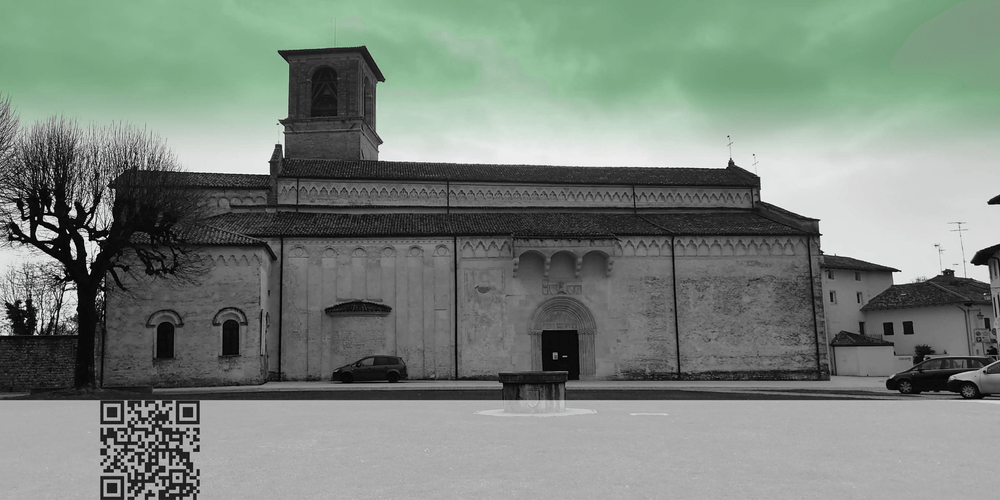
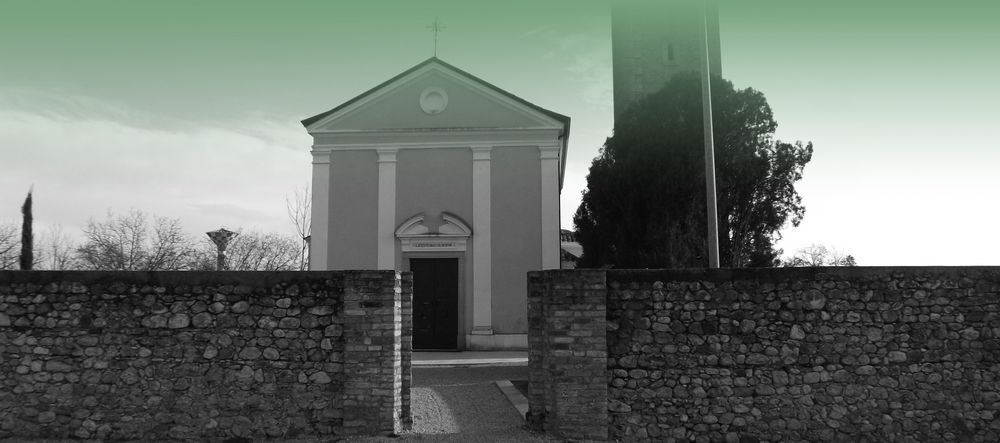
Church of San Lorenzo in Vacile
The Church of the young Pordenone
Located on the road leading to the ford of Gaius and originally protected by a centa, the church of Vacile is a treasure trove of art including a series of frescoes in the apse painted by Pordenone in his early twenties.
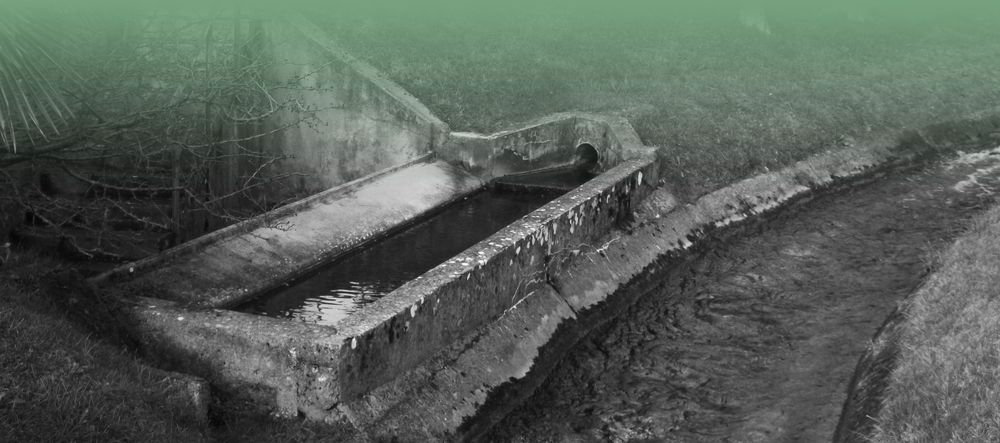
The missing mill and the canal
Ancient mill's memory
Still intact stretch of canal along whose banks stood an ancient mill
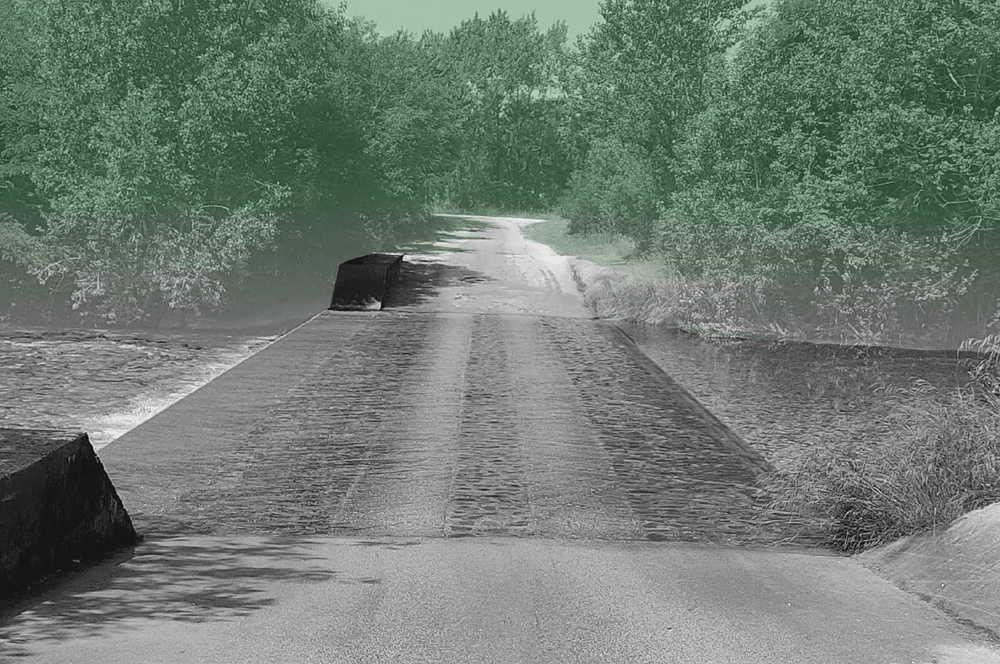
Cosa Ford (Gaio-Vacile)
The last ford in service
During the late 19th and early 20th centuries, several road bridges were constructed to enhance connectivity and reduce reliance on the Cosa stream's fluctuating water levels. The ford linking Gaius and Vacile, which has been properly maintained, continues to be the only crossing point accessible to various means of transport, including cars. It stands as an almost historical artefact—a relic of a bygone era.
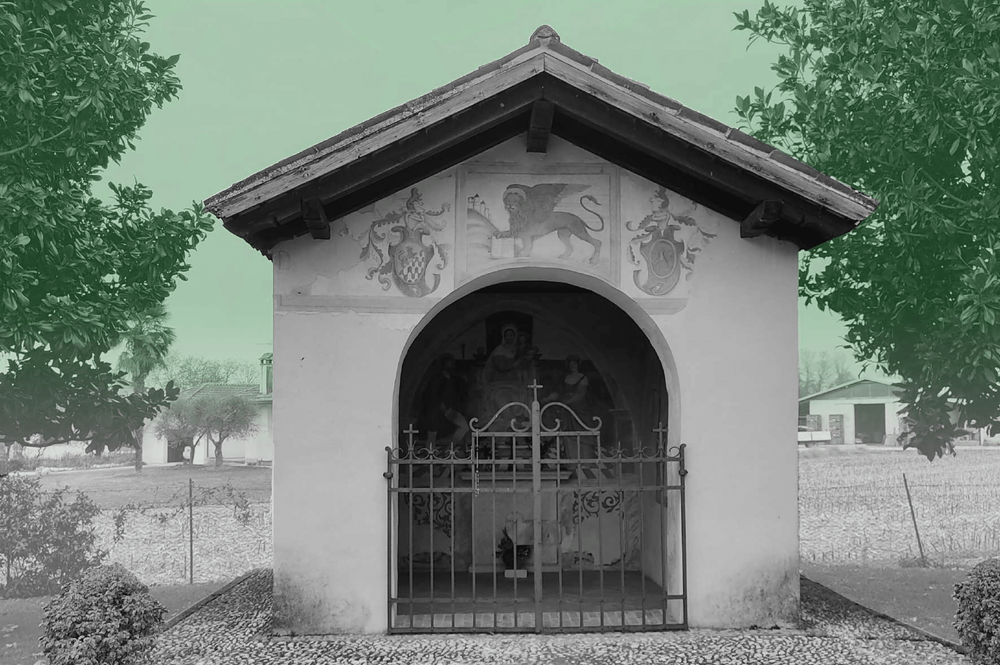
Ancona del Tiussi (or better Wayside shrine of Madonna delle Grazie)
A modest chapel showcasing important masters
The structure likely dates back to the mid-sixteenth century. In addition to the Madonna and Child, it presents the figures of St. Roch (invoked against the plague) and St. Catherine of Alexandria (the patron saint of arts and crafts). Marco Tiussi, the artist, was renowned for his devotional paintings, leaving his mark across many locations on both sides of the Tagliamento River.
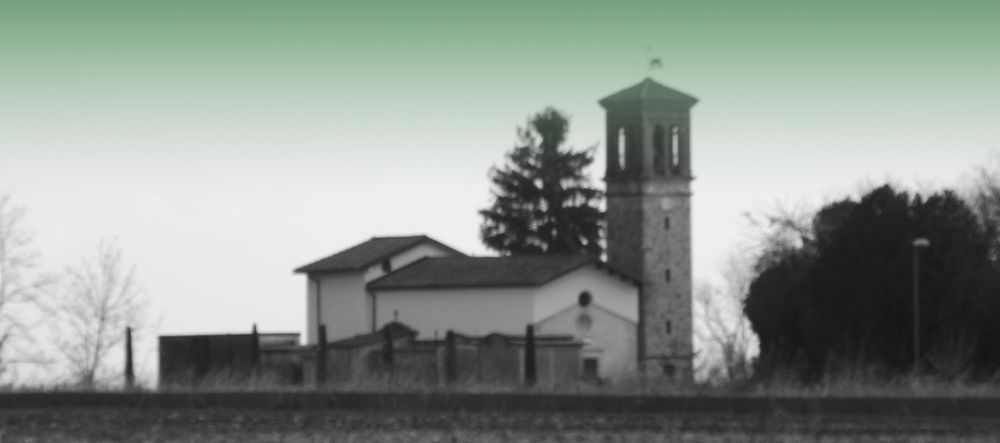
Church of San Marco in Gaio
The church overlooking the river
The Church of San Marco enjoys a remarkable position, overlooking the Tagliamento riverbed, and offering panoramic views of the northern mountains and the villages scattered across the upper Friulian plain. Reconstructed in 1490, the church features a portal adorned with Pilacorte's angelic heads. Inside, there is a modest painting, regarded as one of the early works of the young Pordenone, who was in the process of refining his exceptional talents.

The meadows of the S.I.C. of the Tagliamento
Meadows never subject to ploughing
The meadows of the Tagliamento have been recognized and protected by the FVG Region through two different acts in an attempt to increase the meadow surfaces again with the aim of reconstructing the historical landscape.
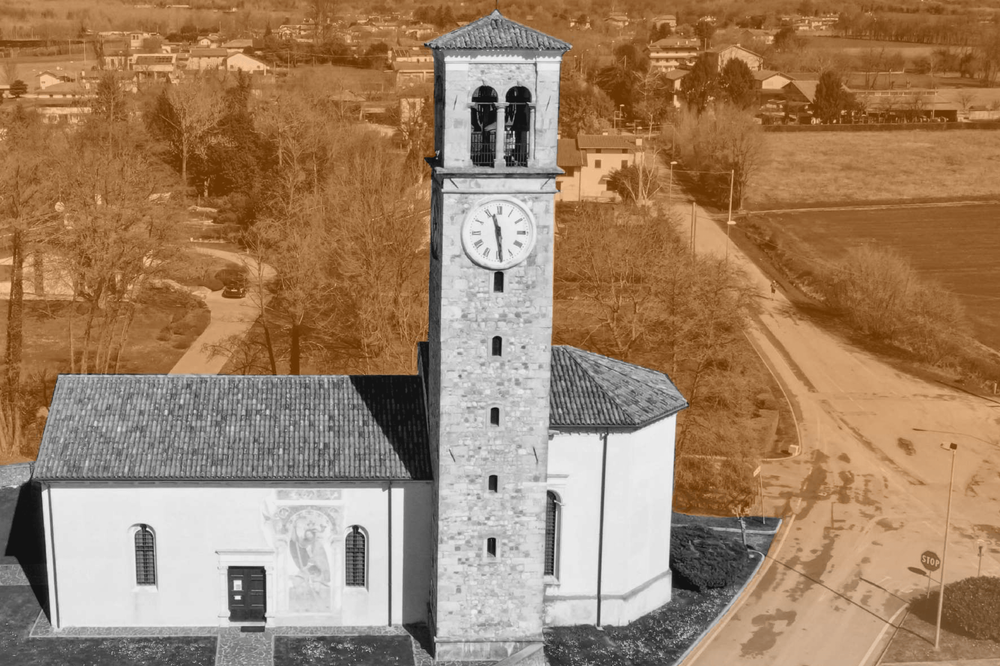
Church of Santa Croce in Baseglia
The stories of the Holy Cross told through paintings
A unique narrative unfolds in the apse through the paintings: it begins with the condemnation of Christ; followed by the to Calvary, the crucifixion, death and resurrection of Jesus, who ultimately triumphs in heaven. Meanwhile, on earth, Saint Helena makes an incredible discovery of the cross three centuries later, only for it to be stolen and then recovered another three centuries after that by Emperor Heraclius. A Renaissance art sequence, to be read like a book.
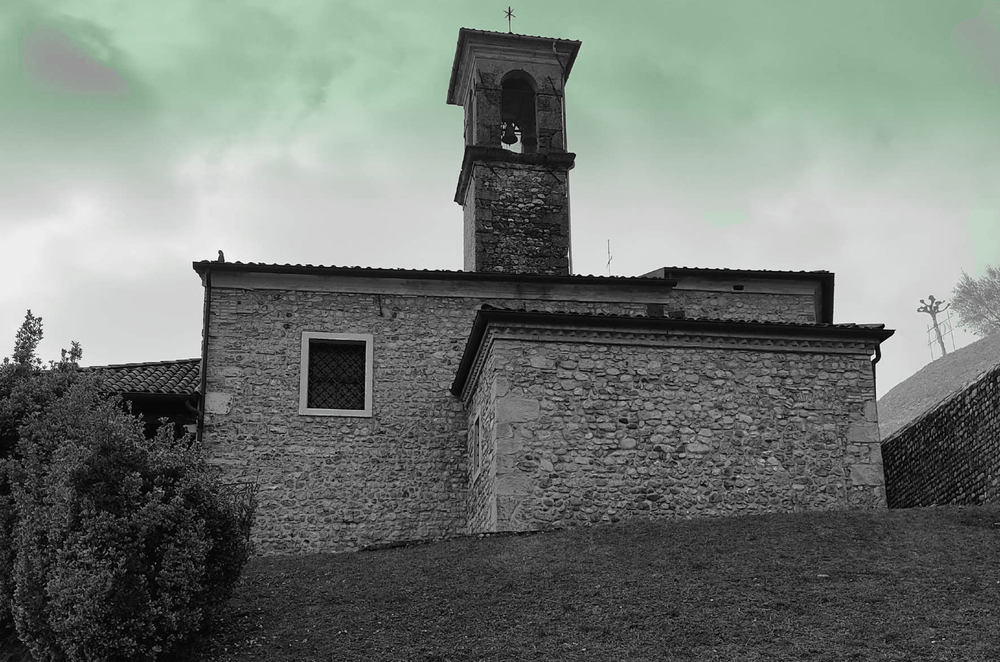
Church of Madonna della Mercede (locally known as Chiesetta dell’Ancona)
Protection against the dangers of the river
The church was erected on the site of a wayside shrine, in Italian ancona. It incorporated materials reclaimed from the more exposed Church dedicated to Saint Jerome, which had been destroyed by the river flooding. This modest edifice, complete with a portico, served as a shelter and changing point for travellers either disembarking from or preparing to board the ferry to the opposite shore. The river crossing presented significant risks to those undertaking the journey.
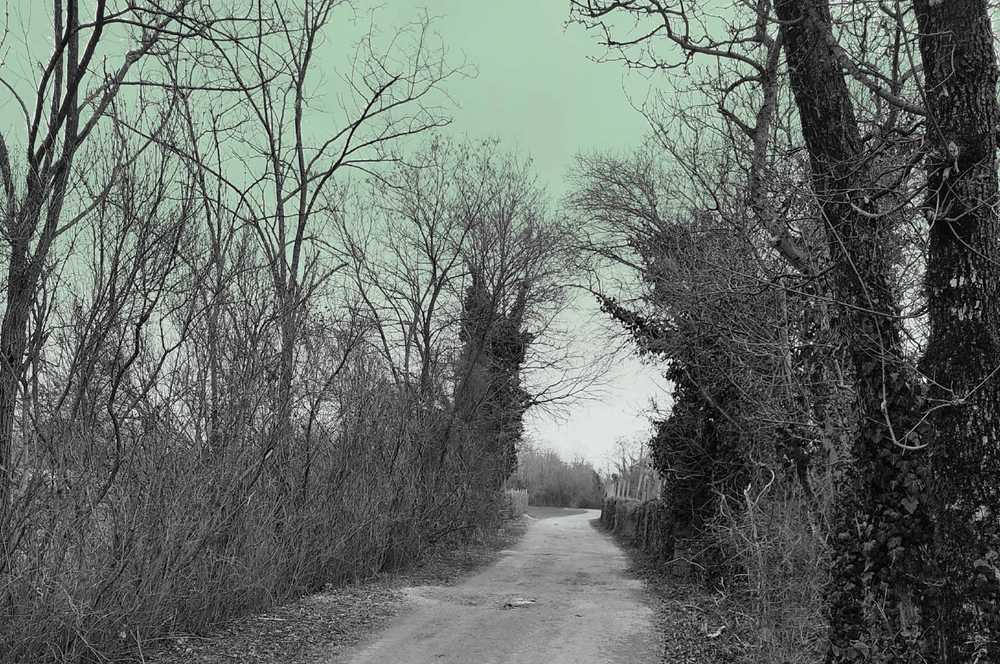
Carpacco Ford
The ancient ford of Spilimbergo
The Spilimbergo ford was composed of two different streams of the river and a central island in an environment dominated by meadows. The eastern branch of the river was richer in water and was also equipped with a ferry.

Belvedere on the Tagliamento - View spot
A window out over Friuli
Adjacent to Palazzo degli Spilimbergo di Sopra (now the town hall), a notable panoramic terrace is situated atop a mucula (riparian hillock). This elevated vantage point affords an impressive vista of the Tagliamento riverbed, often referred to as the 'father' of Friuli.
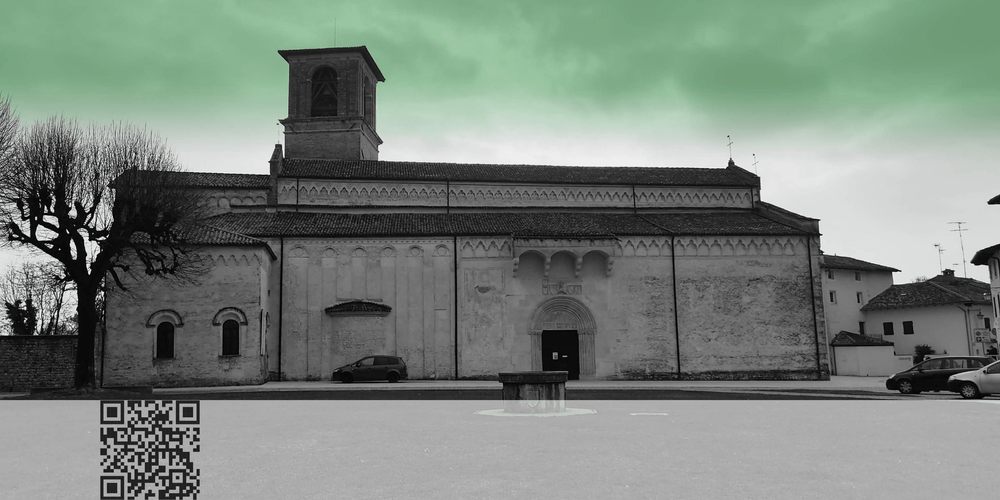
Spilimbergo
One of the most beautiful historic centers in Friuli
The town, located near the old Roman road that connected Sacile to Germany, takes its name from the Corinthian counts Spengenberg, who settled there around the 11th century.
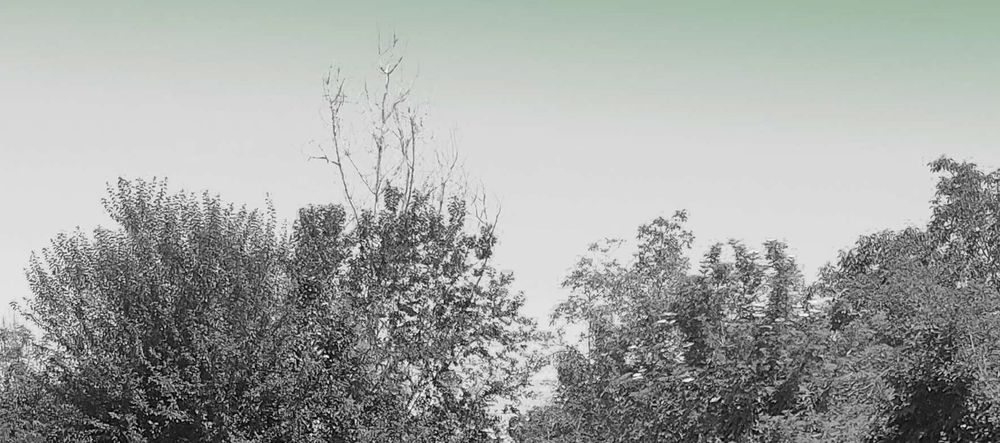
Bonzicco ford and Great War footbridge
Generations of men have left their mark
The ford's frequent use is evidenced by the existence of a structure (domus lapidea) built in 1290 to accommodate wayfarers. A small port nearby allowed lumber rafts from Carnia to unload their goods. During the Great War, a wooden bridge was constructed at the ford site, used by thousands of soldiers en route to the front lines.
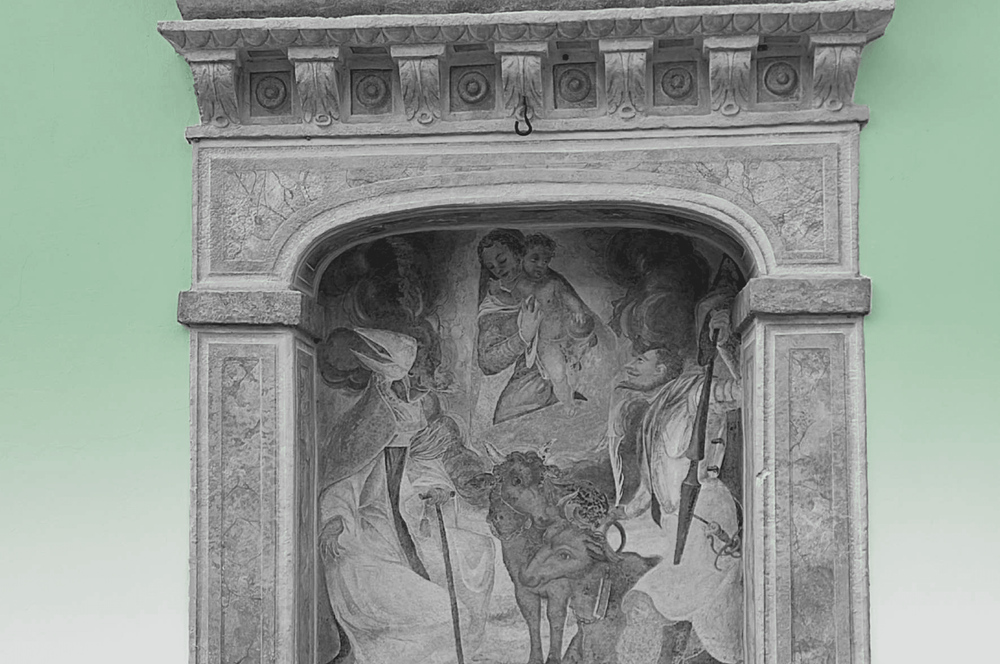
Aedicule of St. Florian
When art meets devotion
This remarkable work, a rare example of Gaspare Narvesa's artistry, was commissioned by an unidentified patron at the turn of the 16th and 17th centuries. The beauty of the fresco is enhanced by the ornate frame surrounding it. The work highlights the popular devotion to Saint Anthony Abbot and Saint Florian, who were invoked for the crucial needs of the rural communities: protection from fires and floods, acute maladies, and ensuring the well-being of livestock.

Prehistoric hillfort of Gradisca
A fortress on the river
This stronghold, known as a castelliere, was part of a network of fortifications spread across the upper Friulian plain—a crucial junction between the Po and Apennine civilizations and those of central Europe. After being destroyed by fire in the 8th century BC, it was rebuilt and continued to dominate the area for centuries. However, as trade routes shifted, the site was eventually abandoned and buried by time, only to be rediscovered by chance in the late 19th century.
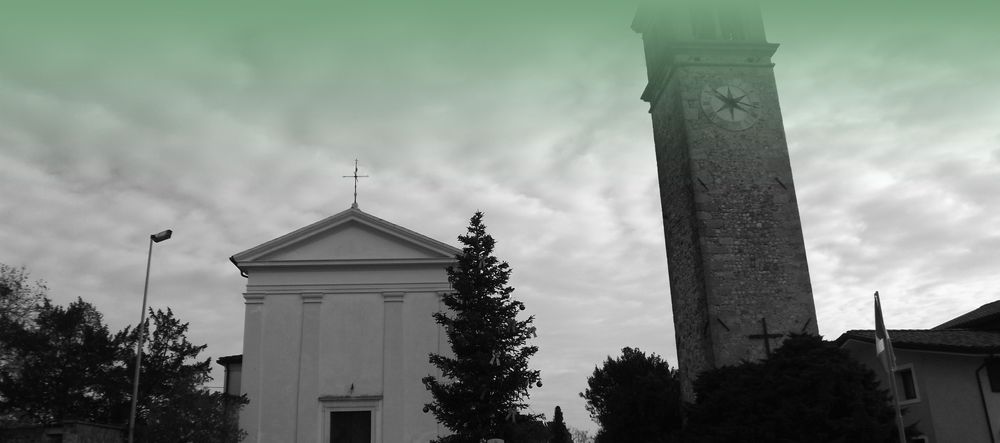
Church of San Leonardo
The Crucifixion by the master painter from Tolmezzo
The side walls of the apse depict Christ's last earthly days. The scenes follow a clockwise pattern, starting from the right. A plinth portrays Heaven and Hell. The artwork culminates with the monumental Crucifixion, which spans the entire back wall. A distinctive feature of the artist is his emphasis on real-life details. For instance, in the Last Supper, an apostle is shown blowing his nose like modern-day footballers do!
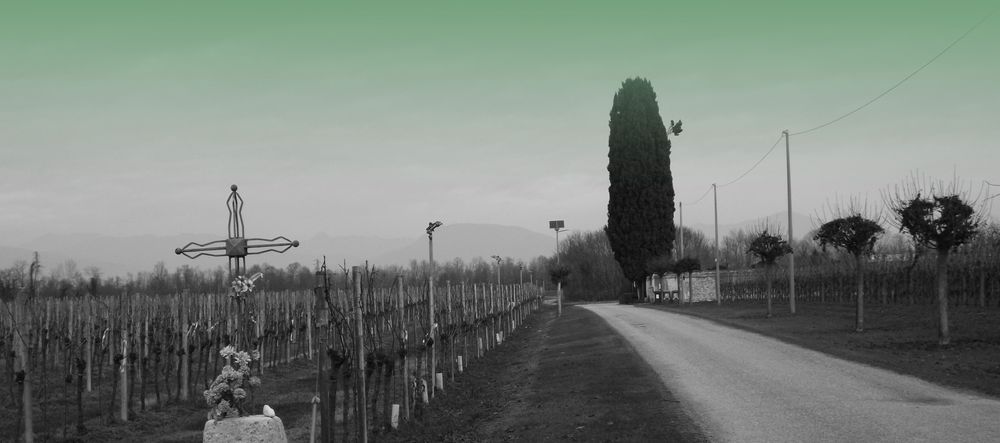
Ford across the Cosa Torrent (Provesano-Gradisca)
An umbilical cord between two communities
Located between these communities, the ford was a frequent site of tensions, sometimes resulting in stone-throwing and fights. Over time, the ford between Provesano and Gradisca (near the cemetery) became less significant with the construction of a nearby road bridge. For centuries, it had connected the communities of Provesano and Gradisca despite their occasional rivalries.
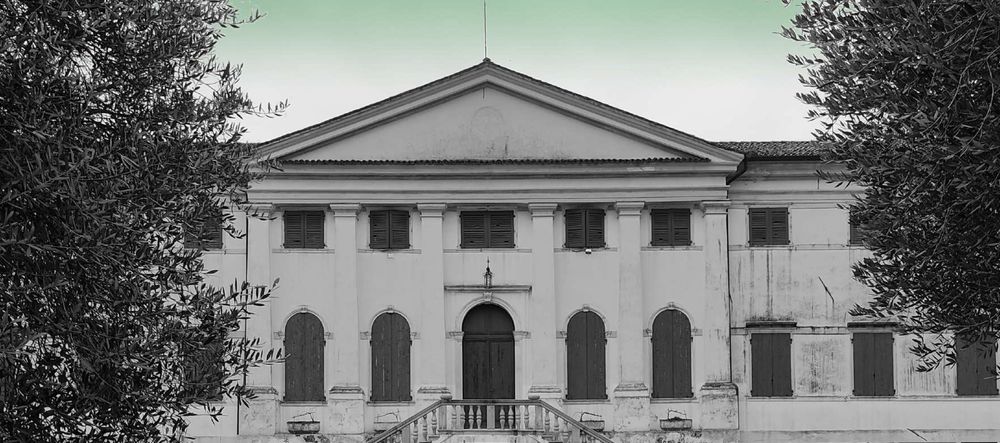
Castle of Cosa
The elegance of a stately residence
The building, rebuilt in the 17th century on the site of a no longer existing medieval fortification, was damaged by fires and devastation in the First World War but was later restored. The main structure has two wings facing the countryside and three corner towers. Next to the outer walls is the small 17th-century chapel dedicated to Saint Anthony, which is privately owned but open for public use.
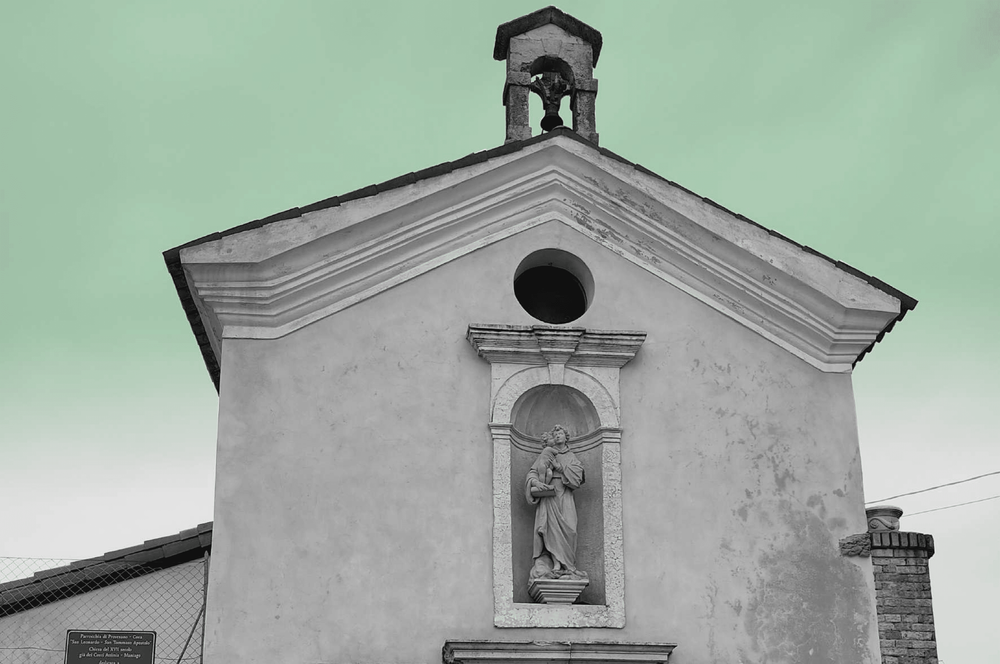
St. Anthony's Chapel
The castle chapel
It was common at one time for small private churches in noble complexes to also be open to the use of commoners, with the main façade facing the public road and a secondary entrance leading into the private garden
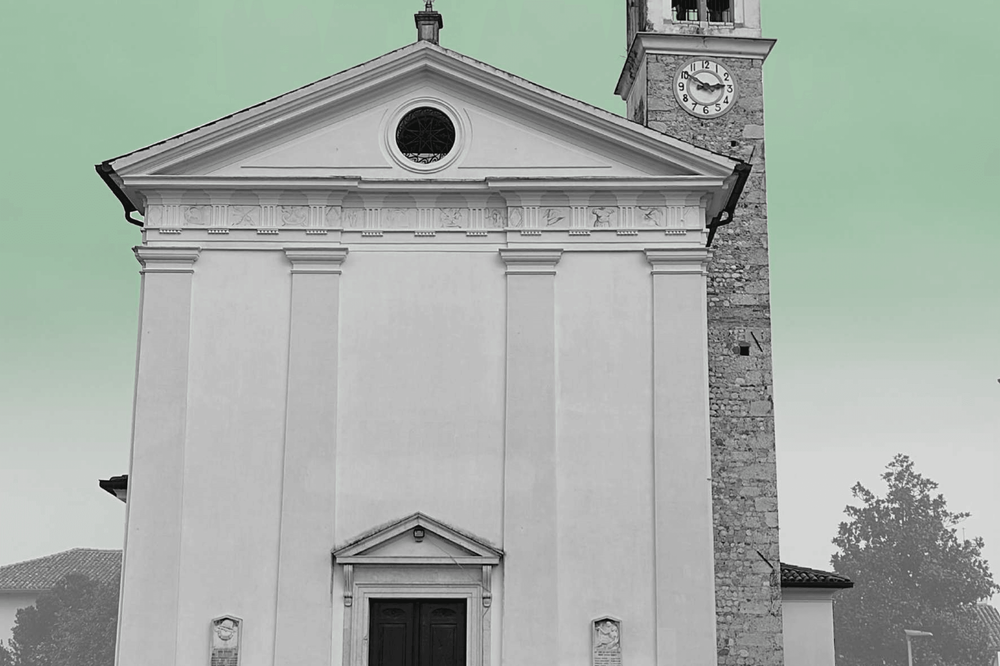
St. Thomas's Church
The work of the mysterious artist
The present church was built between 1846 and 1879 on the same site as the old one. Inside, it houses works from the 1600s, 1700s, and 1900s. One notable piece is an altarpiece titled the Circumcision of Jesus by an artist whose name was unknown for centuries. Restoration work conducted just before the 1976 earthquake revealed the artist's name, but it has only added to the mystery as no further information is available about him.
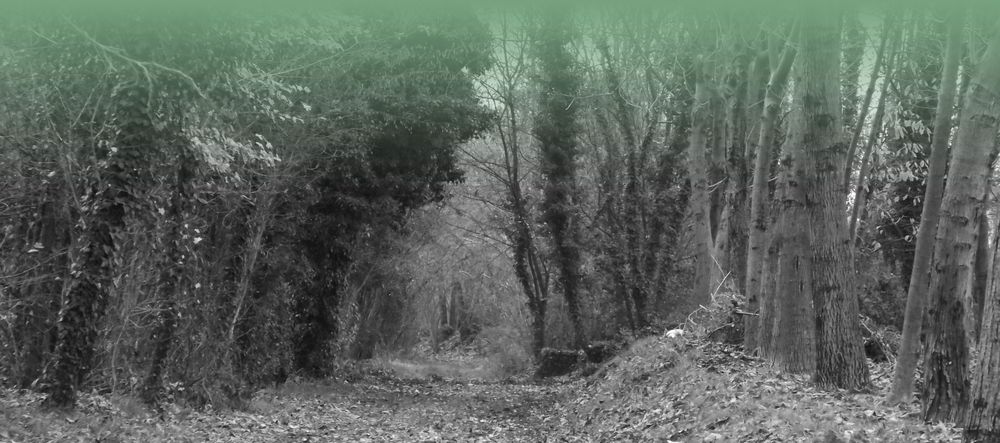
Roggia and the old road
Well preserved historic street
The canal also powered the Cosa mill which today looks like a normal house. Downstream of the same today there is, now abandoned, the old wash house of the town.

Church of Saints Urban and Sabina
An inconvenient saint
The current church, dedicated to Saints Urban and Sabina, was built between 1801 and 1803 in a neoclassical style, replacing an older church dedicated to Saint Sabata. The side altar from 1531 is dedicated to Saints Urban and Sabina, likely originating from the old church. This altar is attributed to Donato Casella, a Lombard stone-cutter and Pilacorte's son-in-law, and still displays traces of the original colours.
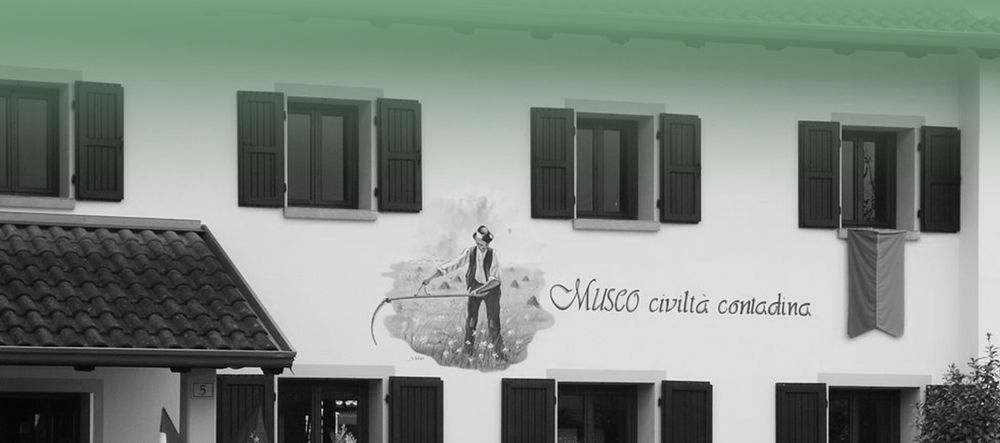
Rural Heritage Museum
The founder never got to see his work completed
It contains approximately a thousand items, primarily related to the practical and daily life of the local people from the late 1800s to the 1960s. The collection includes furniture, household utensils, and farming tools as well as extensive variety of handicraft tools. In the yard, you can find a threshing machine, a Landini Testa Calda tractor, a baler, and even a horse-drawn buggy.
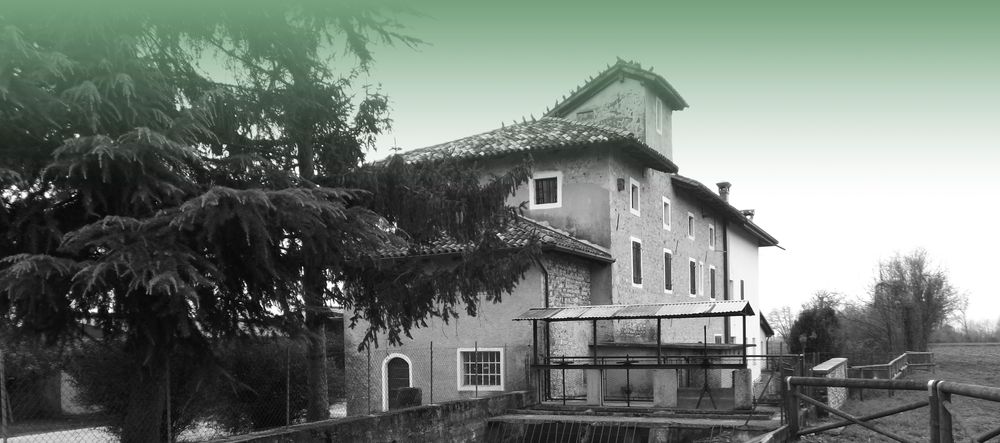
Mulino di Pozzo (also Mulino Secco)
100-year milling heritage
The mill was built in 1855 on the edge of Pozzo, near the roads leading to the medieval pastures and to the old ford on the Tagliamento, which connected to San Odorico on the left bank. After remaining unused for several years, a local association, the Circolo Culturale e Ricreativo di Pozzo, has recently taken on the project of restoring the complex.
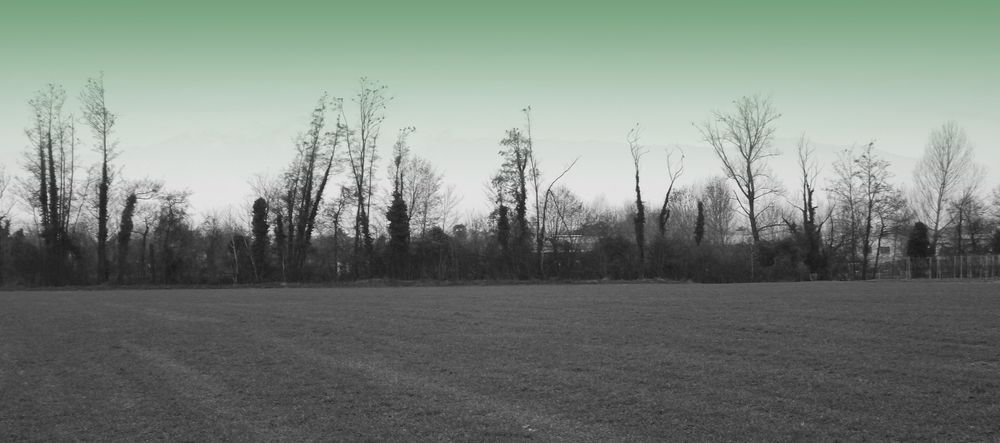
Reorganized former prairies
Traces of the first embankments of the 19th century
The land conquered at the river was privatized and subdivided with a modern design of elongated fields. Mostly straight service roads were built along the ex-Tagliamento
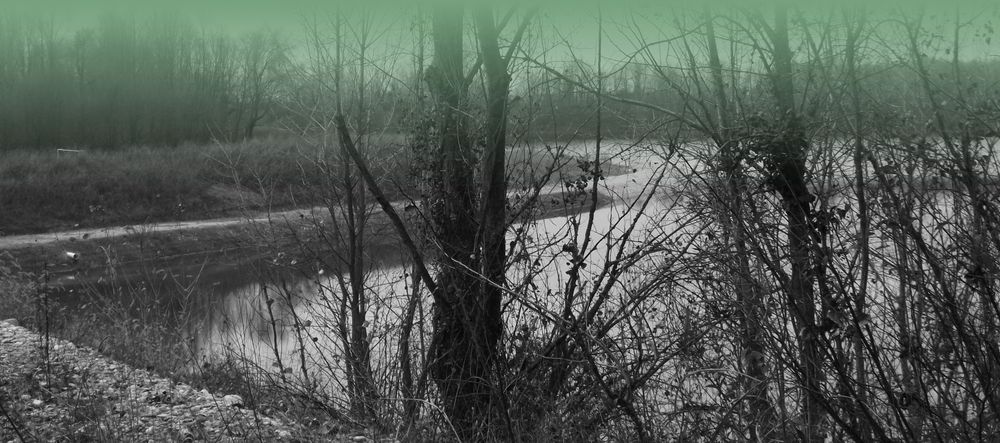
Abandoned quarry
Example of an open pit quarry
In the second half of the 20th century, the enormous demands for material for the construction of buildings led to the creation of many open-air quarries which here, unlike those in the high plains, have a bottom immersed in the hydraulic aquifer.
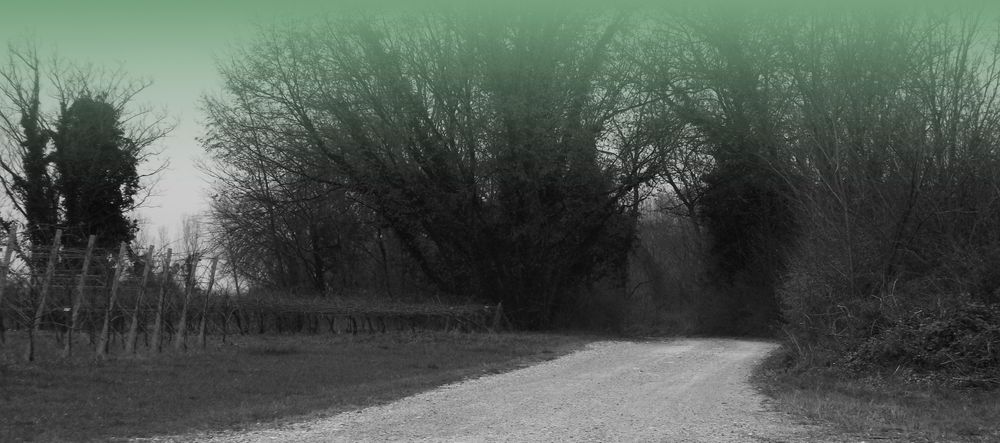
Tagliamento branch disappeared
Ancient limit of the Tagliamento
The dirt road marks this historic limit of the space which until the end of the 19th century was a rushing river crossed by rafts of trees cut in Carnia and headed for Venice.
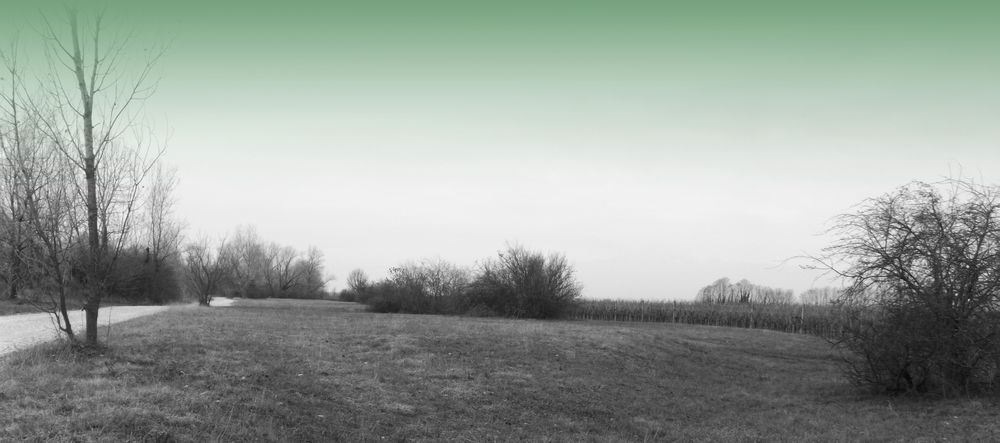
Stable meadows and historic quarries
Nineteenth-century meadows and abandoned quarries
The stable meadows formed in the 19th century have not completely disappeared. Some small portions that have never been used still come to the attention of visitors
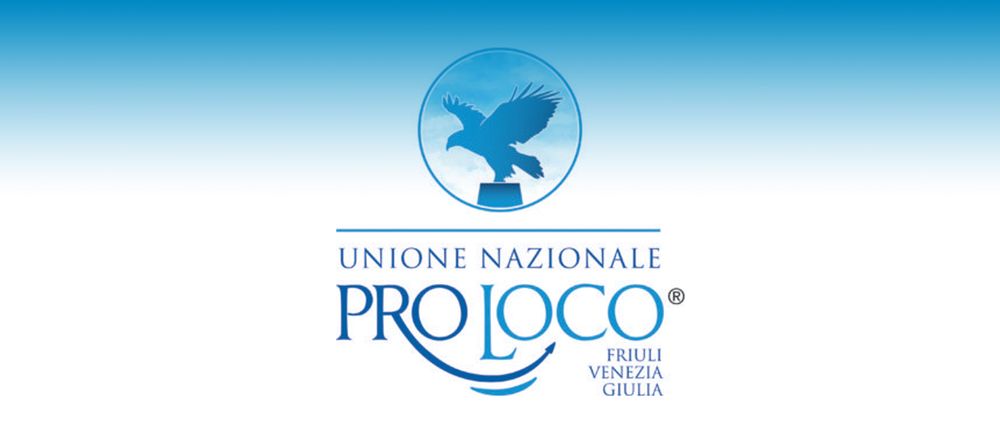
Machine gun emplacement
A machine gun to defend the bridge
Initially conceived as a contingency measure for an improbable retreat, this strategic point proved crucial in late October 1917. German invasion forces, upon reaching Dignano and Bonzicco, attempted to traverse the Bonzicco footbridge. Italian soldiers maintained their position until November 4, at which point they received directives to withdraw to the Piave River.
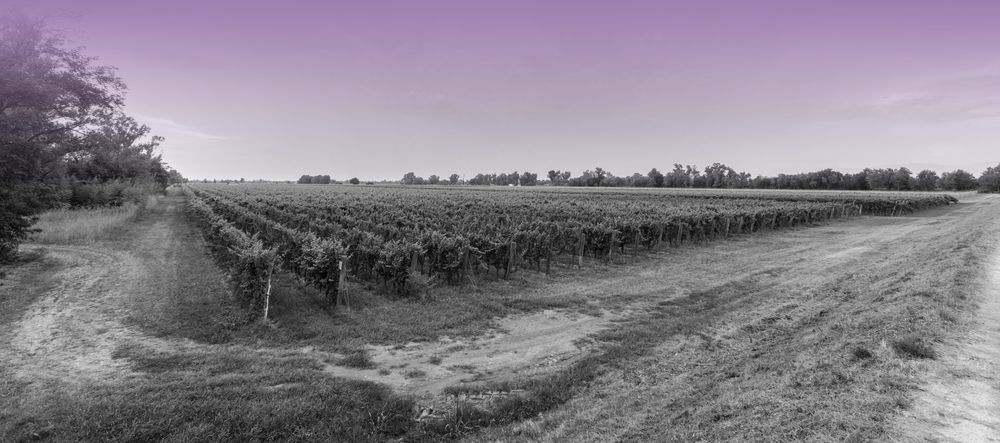
Rivis FordI - Itinerary 3 arrival
The bond between two communities
It is the ford that once led to Rivis, on the left bank, in the municipality of Sedegliano, with which relations were very close and frequent. In this context, the ford acted almost as an umbilical cord, which bound two communities separated by water but united by a common history
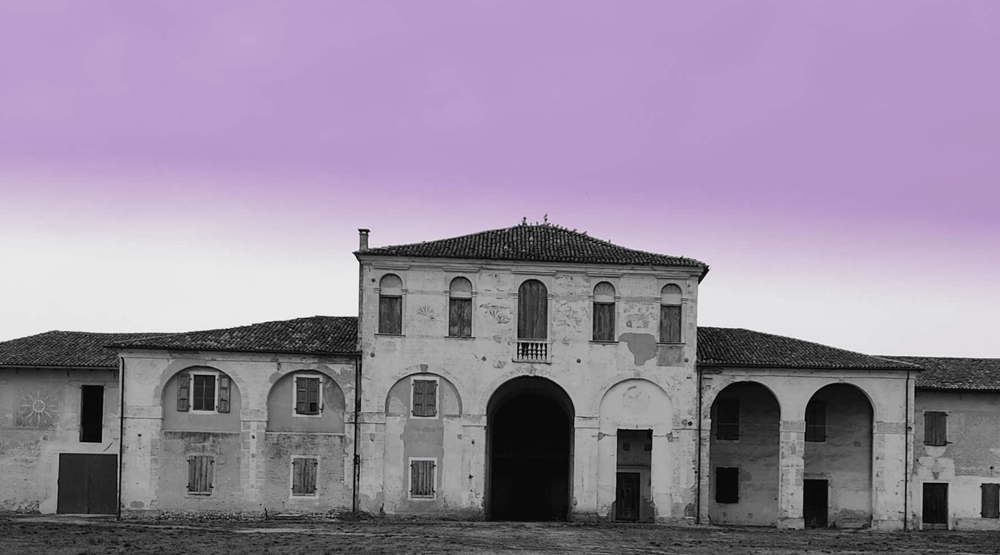
Villa Partenio (currently Tenuta Pinni)
A Lombard villa on Venetian soil
The country villa was named after the Partenio family, descendants of the famous 16th-century humanist Bernardino. Built by workers from Lombardy between 1667 and 1690, it features a distinctive design that sets it apart from traditional Venetian villas. The three-story central building, which served as a residence, is flanked by two symmetrical relatively short barchesse – typical rural service buildings of the architecture of Venetian villas – featuring characteristic double-height porticoes.
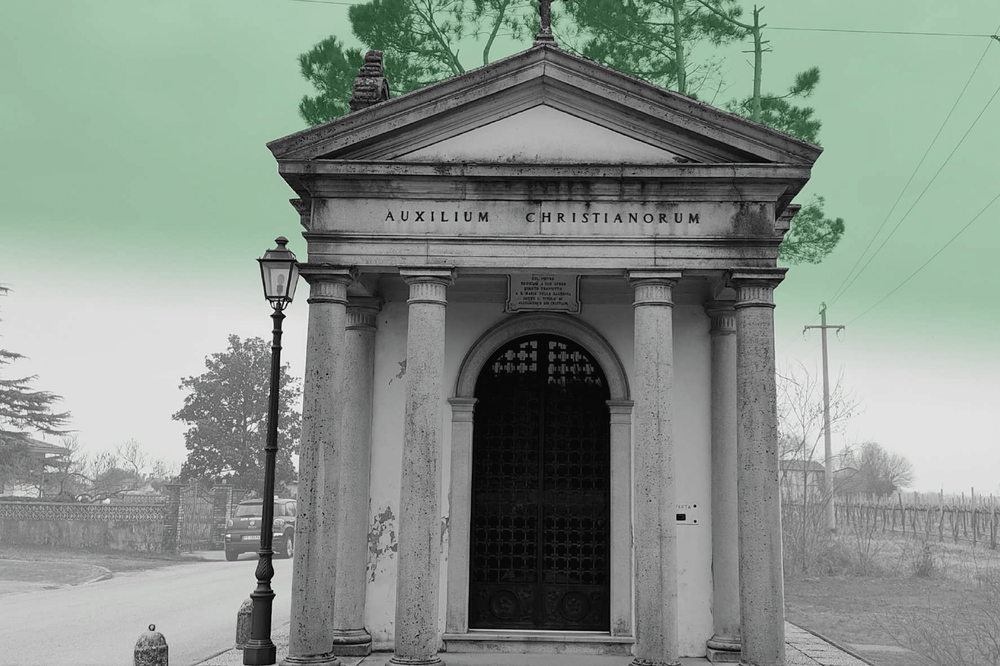
Chapel of St. Mary of Saxony
Neoclassical church from the early 20th century
In these places, agrarian colonization also involved the construction of a new system of territorial meaning through the construction of sacred symbols
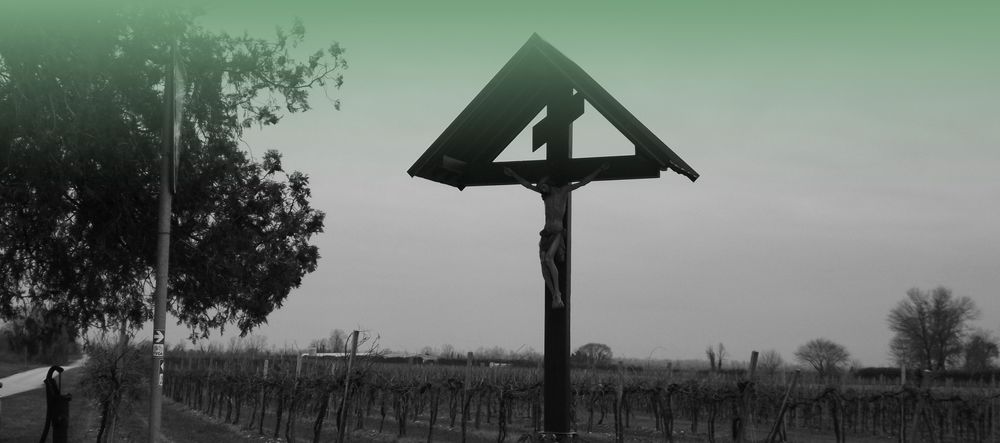
Crucifix of Grava
A legendary battle
The sacred sculpture at the crossroads looks over the farmland stretching to the Tagliamento River. It symbolises the wish for relief from hard work in the fields and the hope for protection against the river's dangers. Additionally, local folklore tells of an ancient battle nearby and the fallen soldiers whose dead bodies were thrown into a mass grave.

Ford across the Tagliamento
The ford where a battle of the Napoleonic Wars raged
After defeating the Piedmontese and capturing Mantua, Napoleon aimed to swiftly advance towards Austria and threaten Vienna. The Austrian troops were positioned on the left bank of the Tagliamento River. However, the Corsican general crossed the ford and overwhelmed the enemy defences, forcing them to retreat. In the subsequent days, the French gained control of all of Friuli and reached Carinthia, compelling Austria to sign a harsh armistice.
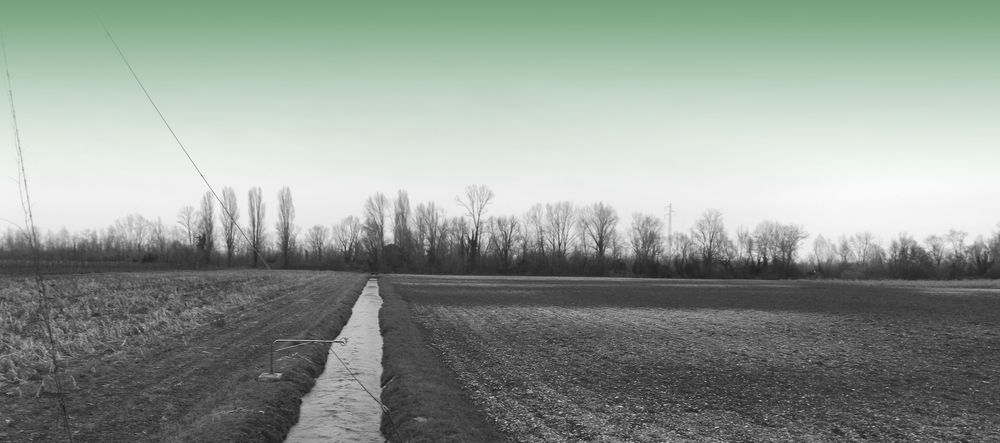
The quarry becomes a lake
Hole made in riverbed
From the embankment you can see an artificial canal that collects all the unused water in the upper plain and converges it into a large hole made in the riverbed and which appears to be a shallow lake
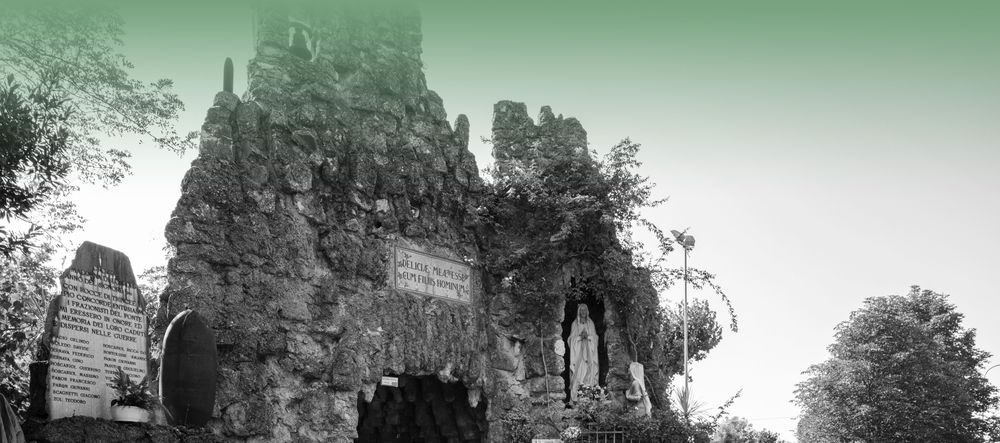
Villa Eugenia and the ideal city
Strategic point on the Tagliamento
On the right bank, at the point where the new postal road to Udine was to arrive, Eugenio decided to build a neoclassical city, an ideal city that would have had the name of Villa Eugenia but which was never built
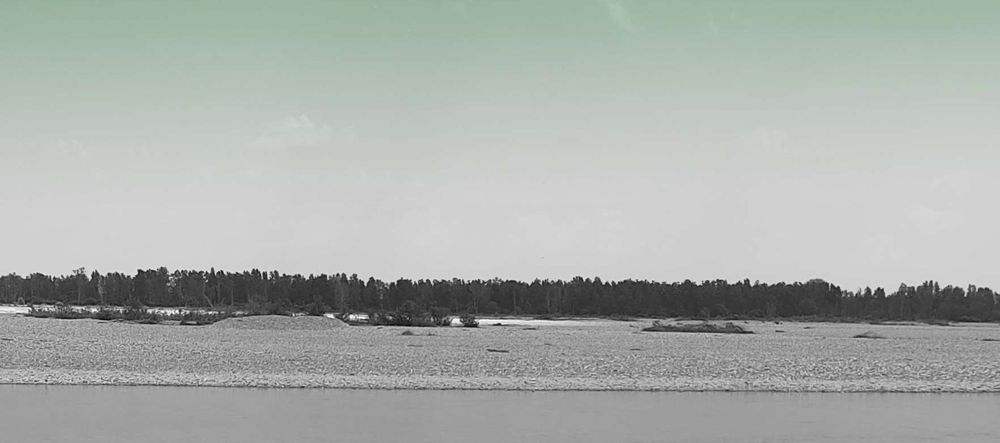
Tagliamento A.R.I.A. Zones
Remains of ancient prairies
An enormous testimony of these very large prairies still remains in the meadows that are now inside the river embankment built at the end of the 19th century. This is an area where the micromorphologies show terraces on different levels and soils still marked by water deposits.
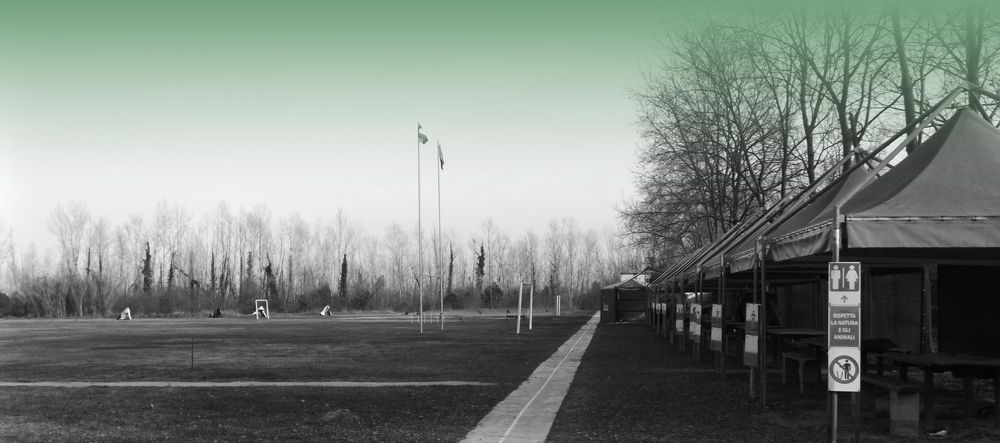
Sport equipment in the riverbed
Floodplain area
The equestrian centre, the space for dog training, the space for model aircraft and the spaces for gymnastics and paralympic sports are an important service to the community
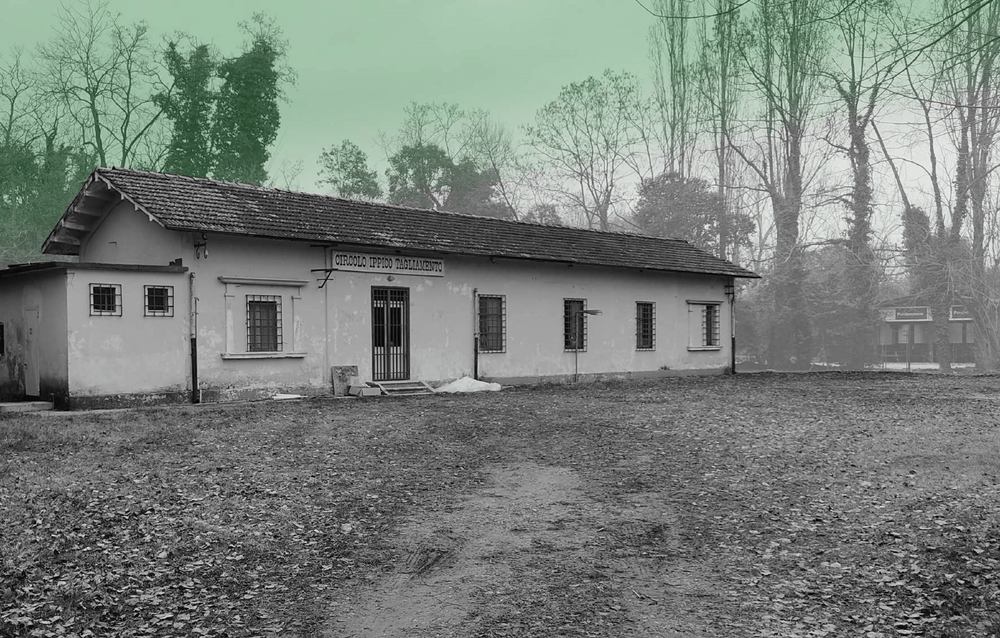
Cold War Barracks
Last garrison preserved
Along the embankment of the Tagliamento di San Vito there are many now abandoned military works. These are bunker positions for machine guns and cannons which were managed by the arresting infantry battalions
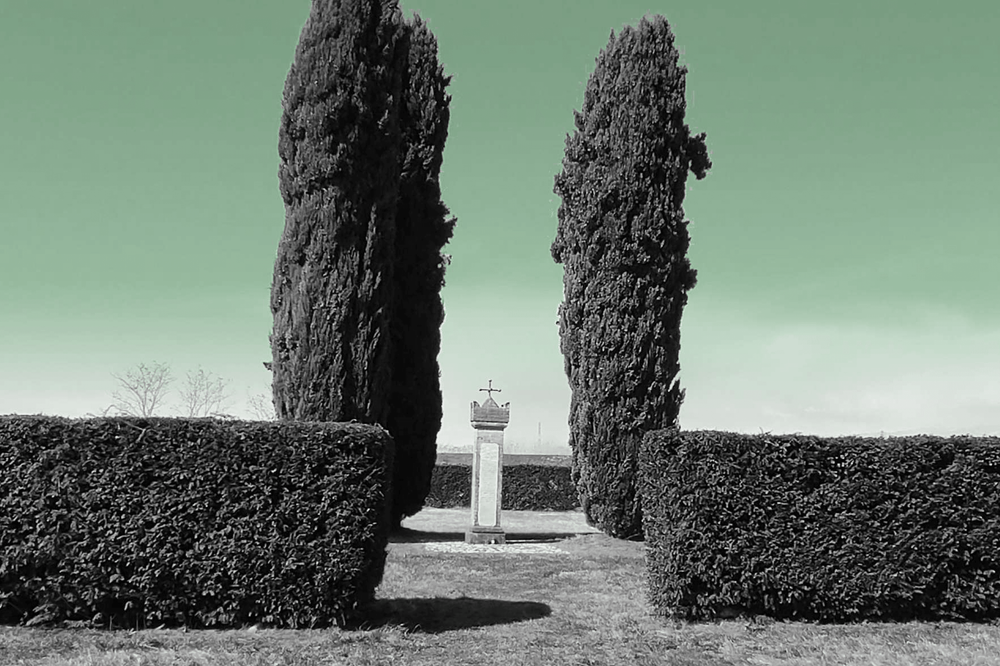
Rosa, the lost village
Ancient village of Rosa
The village of Rosa Nuova has disappeared but the garden sign that commemorates the historic cemetery of the village remains intact.
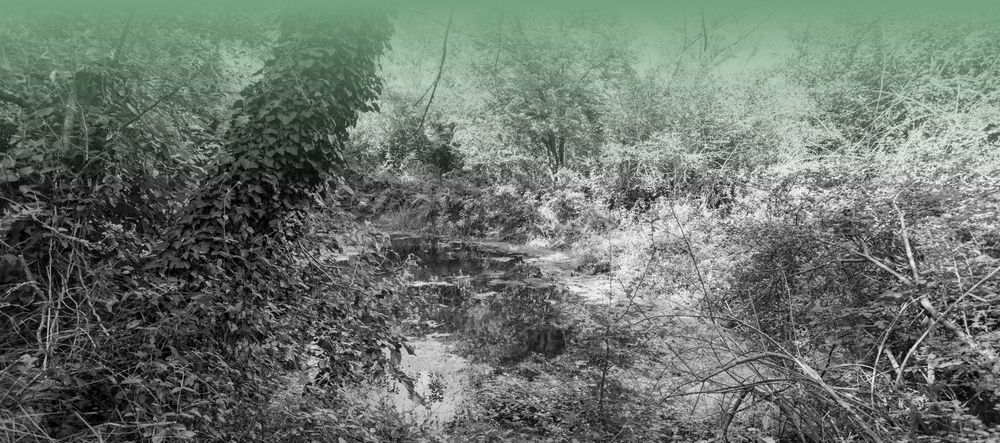
The hole of Rosa
Anomalous river depression
At the edge of the Tagliamento terrace, near the second settlement of Rosa, there is still today an anomalous river depression that appears as a sort of perennial lake
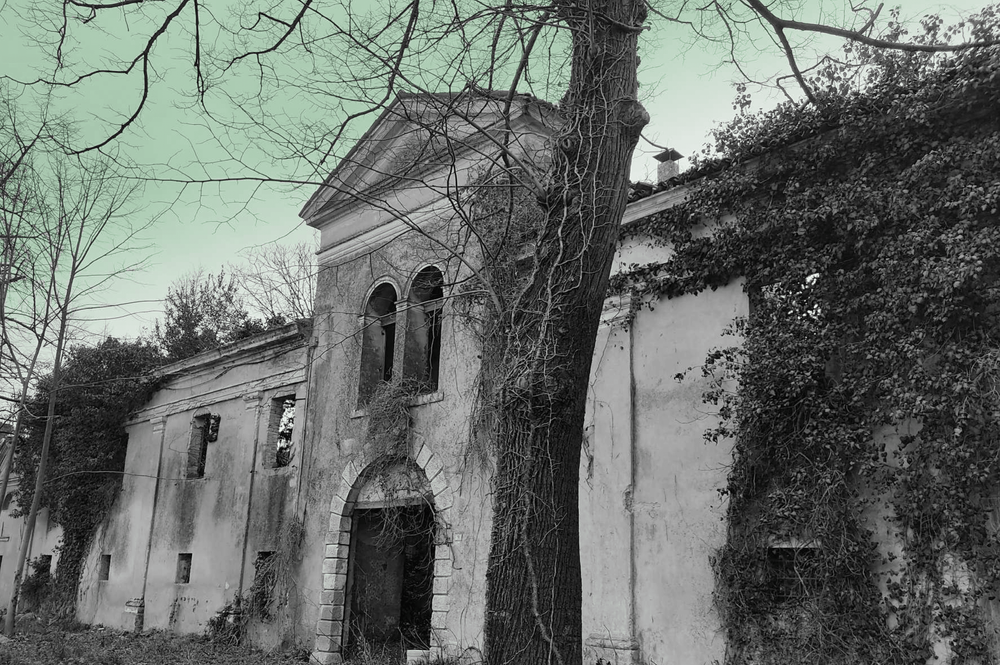
Villa Cragnutto
Old farm with chapel
The Cragnutto residence was built in the 18th century, consolidating an agricultural settlement from the previous century. The stately building was also flanked by a small country church.
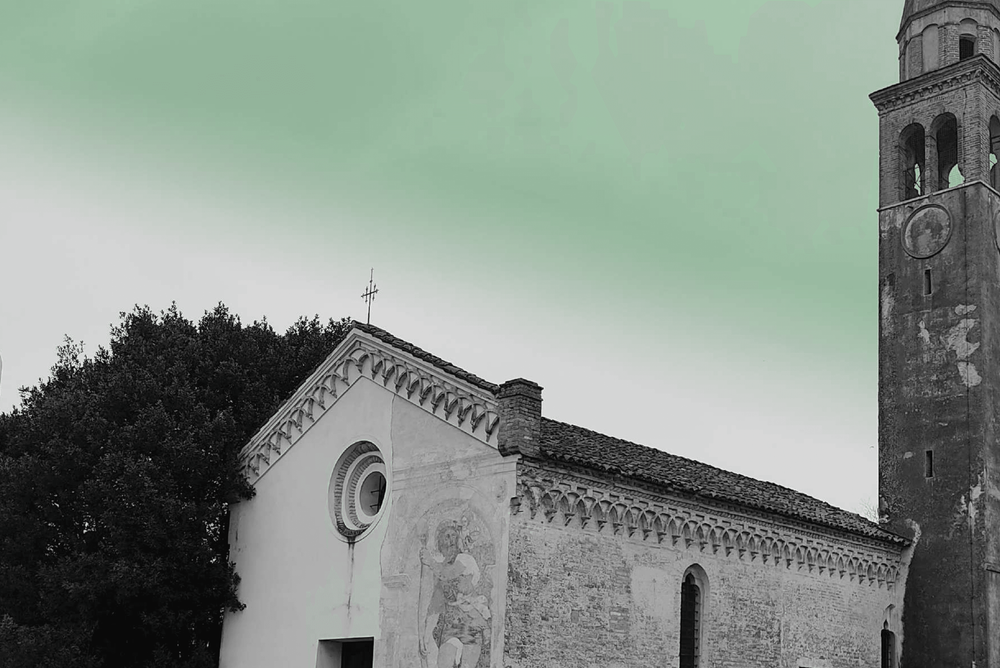
Old Church of St. Stephen in Gleris
15th century church
Inside there are some frescoes attributed to Andrea Bellunello and his workshop, but without a doubt the most important thing is the stone triptych, a late work by Pilacorte.
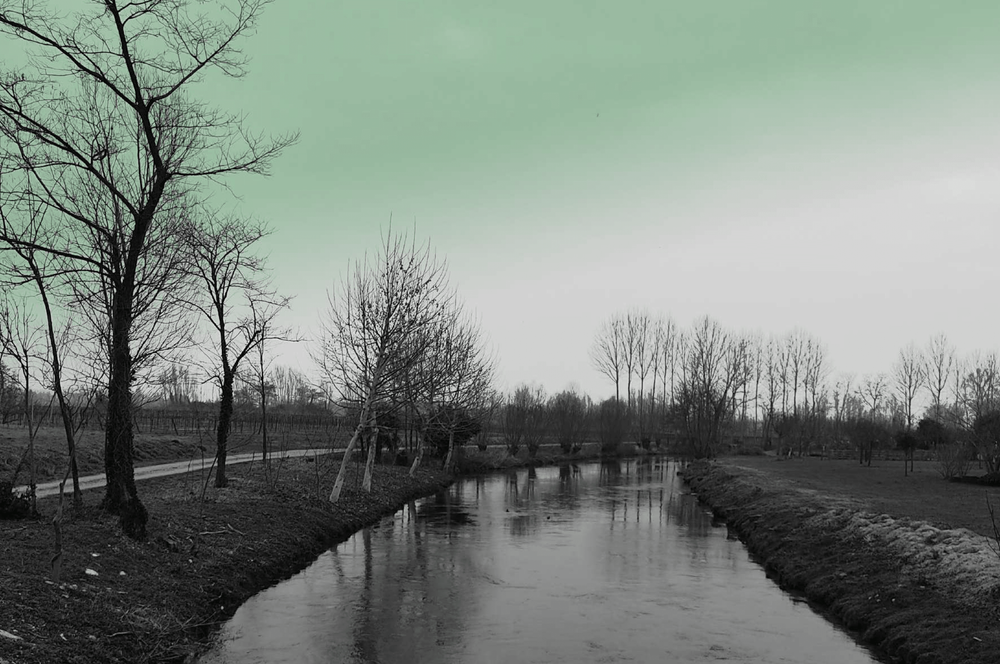
Roggia Versa (River Lemene)
Viewpoint on the watercourse
The Roggia Versa originates east of Casarsa and gradually swells with tributaries from San Vito and Savorgnano that transform it into a small river. The bridge on Via Gleris is an extraordinary viewpoint over this watercourse that just a few hundred meters downstream will change its name to become the Lemene.
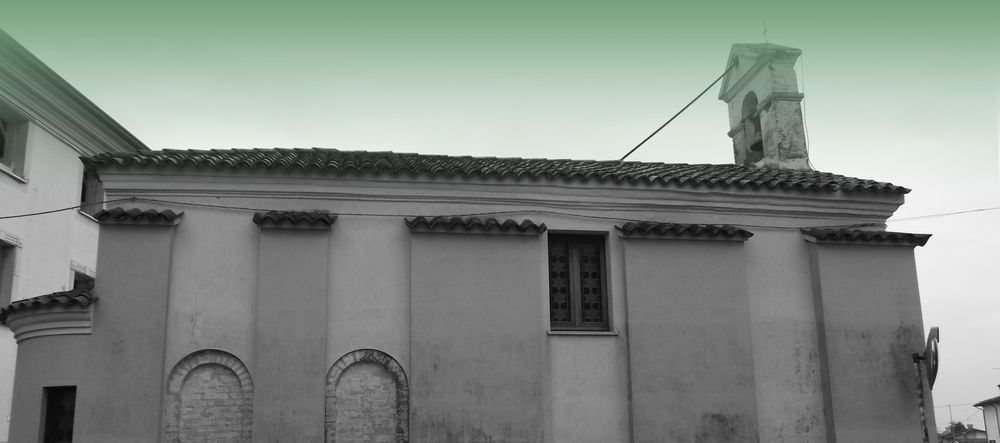
Church of San Rocco in Vissignano
Church rebuilt in the seventeenth century
Dating back to the first half of the 17th century, the current church is the result of the restoration of an older building. In 1610, the original church was rebuilt and then purchased and restored in 1817 by the Variola family.
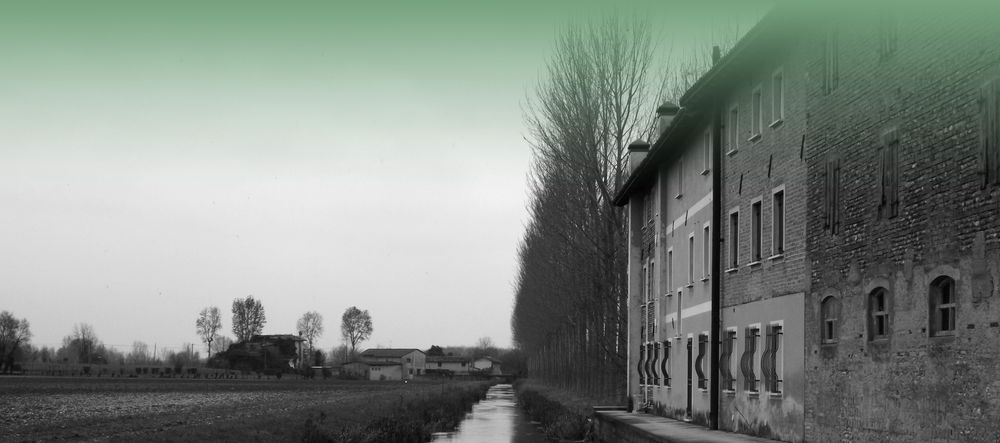
Molino di Sopra (Variola houses)
Natural drainage reclamation landscape
The mill above is today also called Case Variola after the name of the family who acquired the factory.
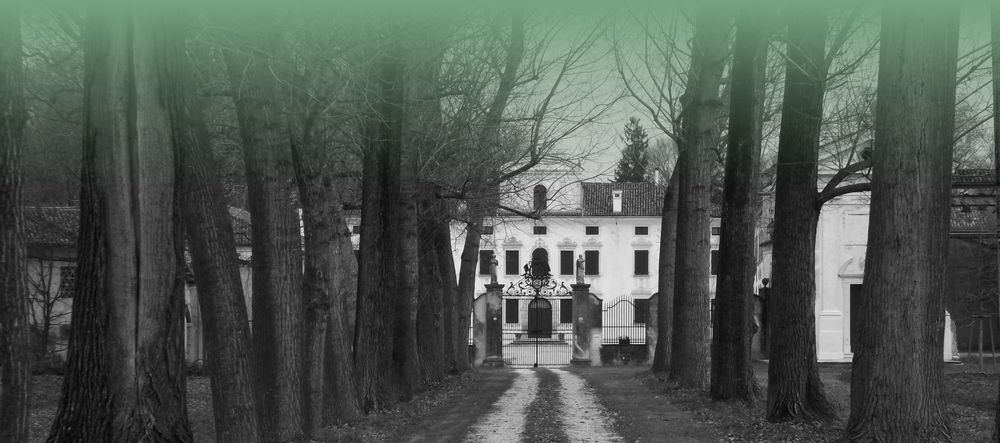
Villa Freschi (former Attimis)
One of the most beautiful Venetian villas in Western Friuli
The villa has an adjoining oratory and is one of the most beautiful Venetian villas in Western Friuli. Furthermore, the monumental complex is surrounded by voluminous agricultural buildings which had an important significance in the mid-nineteenth century.
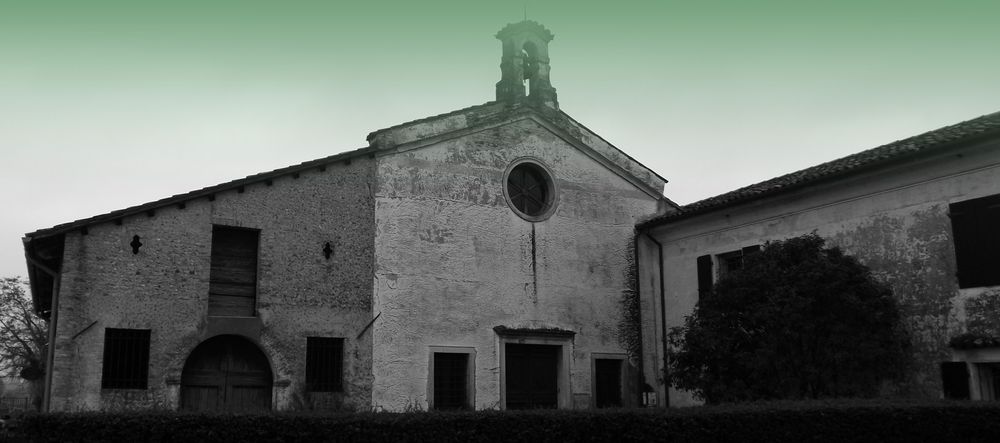
Church of the Madonna di Campagna
Where wolves once roamed
When arriving in Cordovado from San Vito, the first church you see is that of the Madonna di Campagna. It is a beautiful reminder of the small convent that once stood in this wolf-infested area. The fresco of St Francis with a gentle wolf reminds us how travellers sought protection here. During the Great War, the place was used as a military hospital.
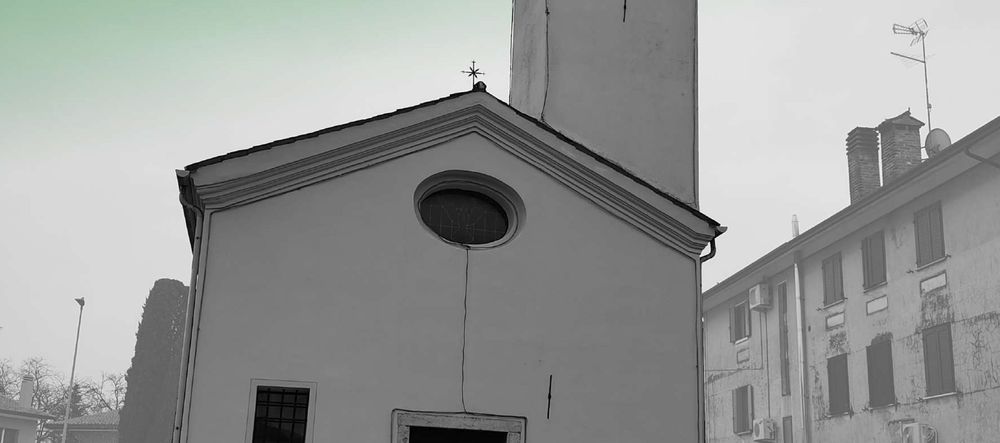
Church of St. Anthony Abbot at Saccudello
In the heart of the quarter
The church's main treasure is a beautiful polychrome wooden statue of St Anthony Abbot. Made in the style of Renaissance by artist Domenico da Tolmezzo, it is highly valued by the people of Saccudello.
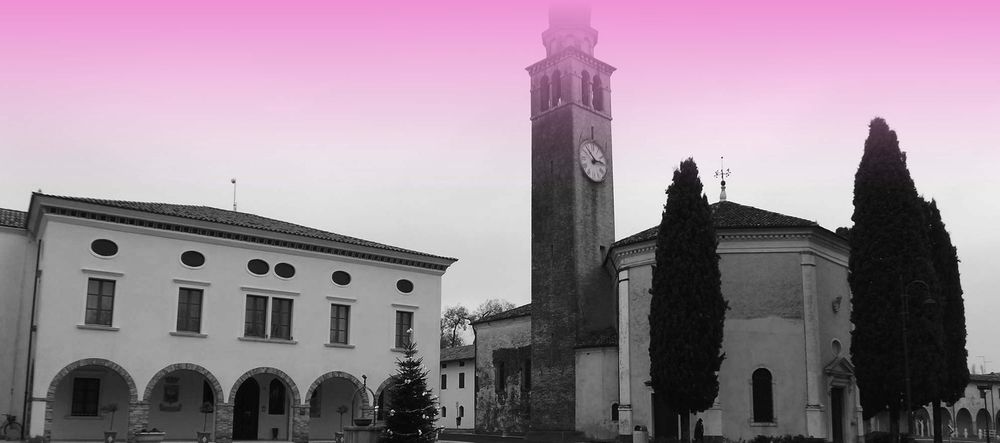
Santuary of Madonna delle Grazie
Venetian Baroque at its finest
Folk tradition held that in Corodovado in the 1690s, a painting of Mary set on a capital at the village entrance came to life, performing miracles. This artwork is still preserved in the sanctuary, built and embellished in the 17th century, attracting pilgrims from all over Friuli, Veneto, and from as far as Austria.
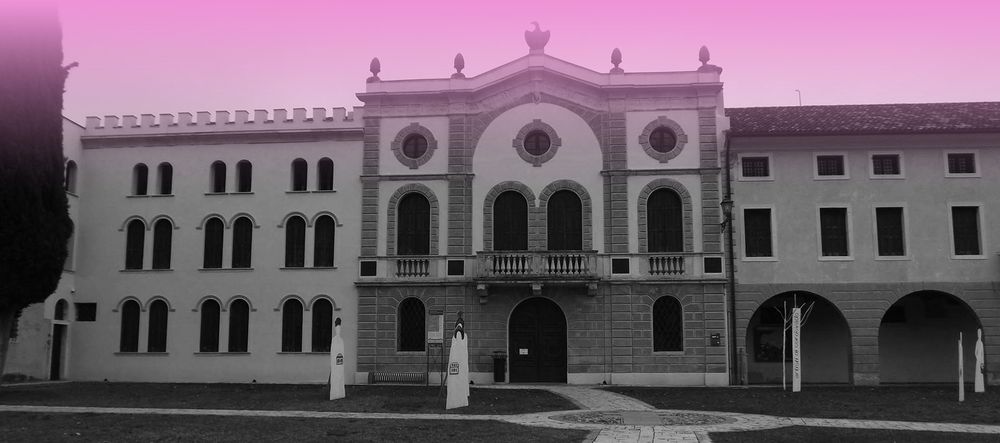
Cecchini palace
The convent transformed into a palace
The Dominican convent was suppressed in 1806 and later purchased by Francesco Cecchini who built his residence with a historicist attitude, also recovering some classicist themes of certain public buildings.
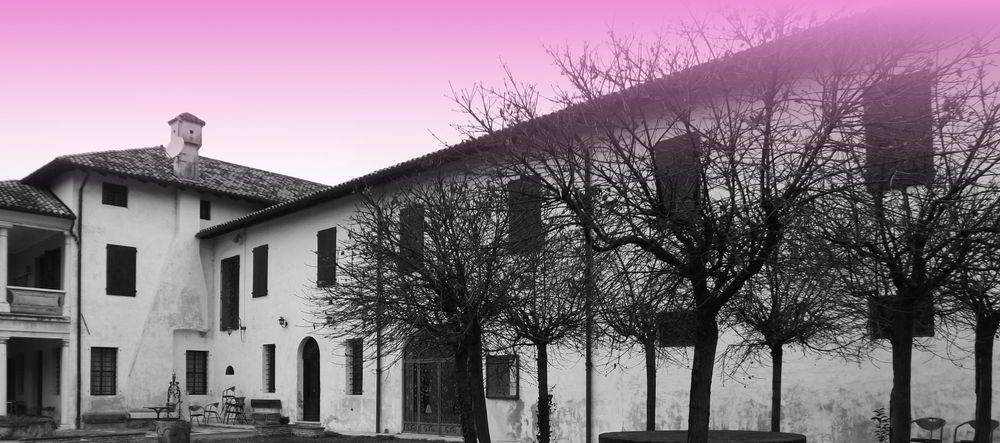
Marzin-Mainardi palace
The convent preserved in the palace
Palazzo Marzin-Mainardi has preserved the original appearance of the convent even if on the occasion of the Marzin residence the rhythm of the arches was complicated by trying to build an axis of symmetry in the central arch by opening a mullioned window with the terrace on the first floor.
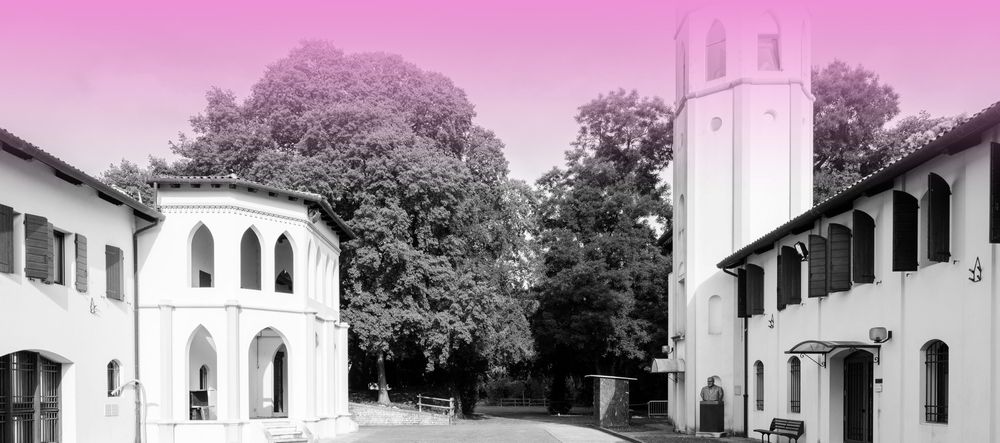
Dominican Park
The old friars' garden
The Dominican park was originally the space that they dedicated to horticultural production for the convent itself. When the religious complex was sold these spaces were used for the construction of two parks
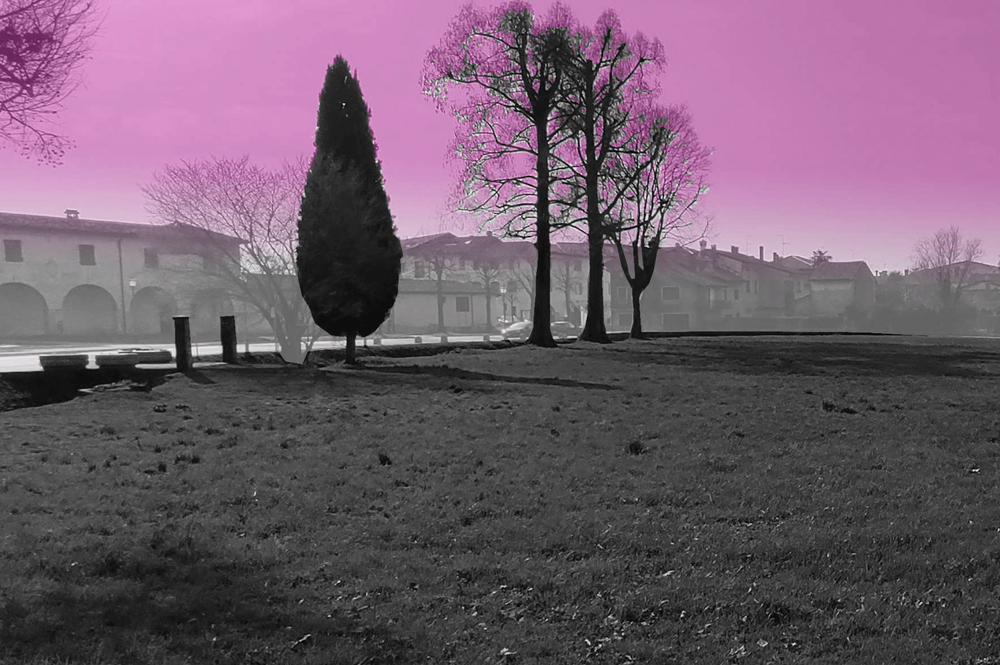
Meadows of the Madonna
Wide humid prairies
In front of the sanctuary there were large areas of prairie which came into the possession of the convent and then of the new owners. These wet prairies ended up becoming a productive space but were not plowed and still retain a very high ecological quality today.
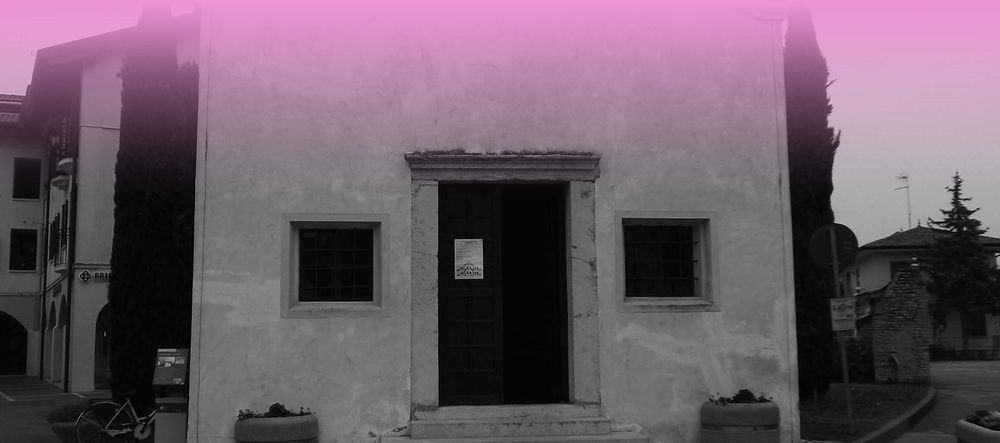
Church of Santa Caterina d'Alessandria
Graffiti by ancient pilgrims
Another place of worship where people prayed for help during plagues is the Oratory of Santa Caterina. Here, around the images of St James and St Rochus, still visible are the ancient graffiti left by pilgrims and locals during epidemics.
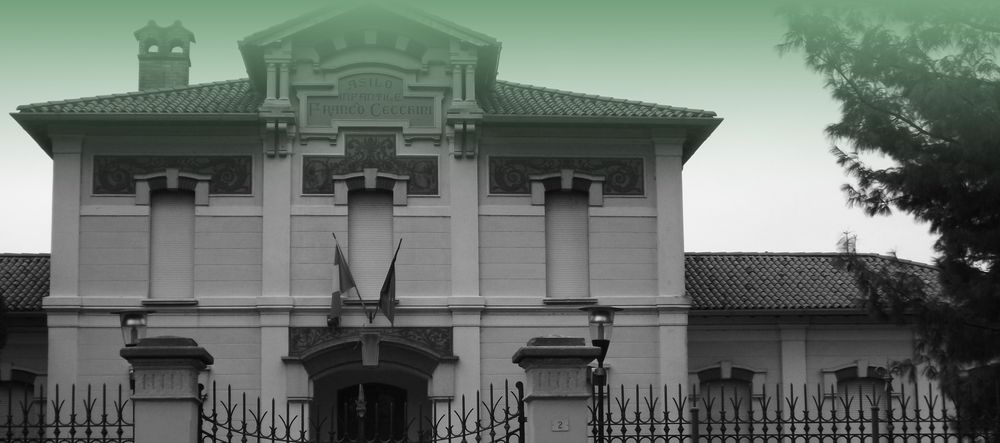
Kindergarten and Villa Variola
A modern nursery school
In 1900, thanks to a bequest from Francesco Cecchini, the municipality of Cordovado built a modern nursery school, a Milanese style building far removed from the historicist construction that was typical of this period in these agricultural suburbs.
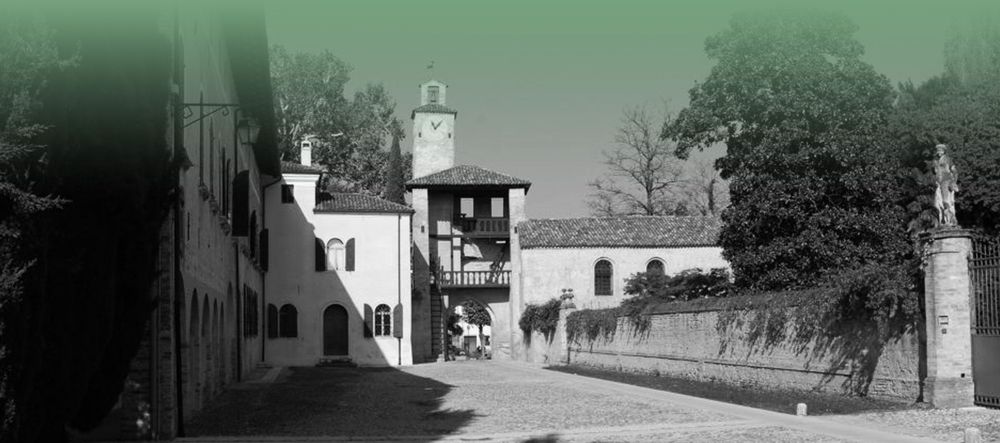
Village of the Castle of Cordovado
Castro Cordevadi
The castle was probably built on the site of a prehistoric hillfort and the 'Cordevadi castle' mentioned in 1276 consisted of a manor house and an inhabited sector with a village inside the enclosure.
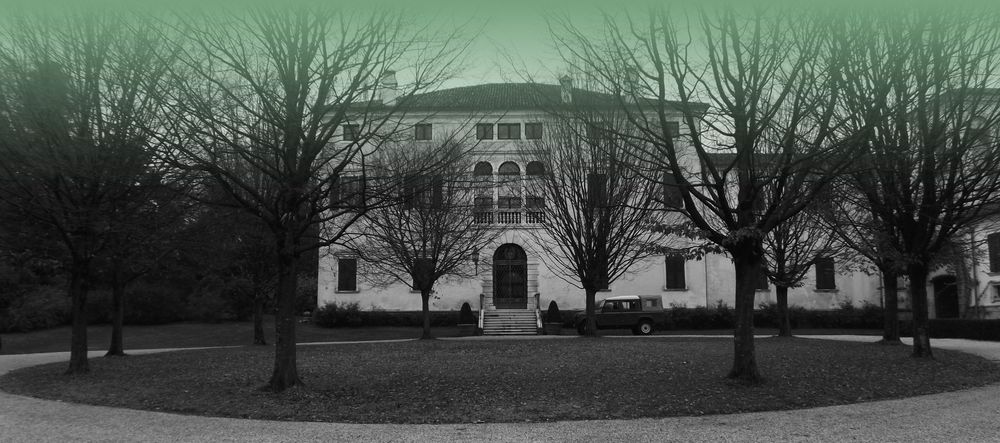
Freschi Piccolomini palace
The heir to the ancient castle
Inside the ramparts stands Palazzo Freschi Piccolomini, dating back to the late 1500s. It was built by the Attimis nobles on the remains of an old medieval castle. The building follows the classic Venetian style, with a central hall and rooms on either side. It is surrounded by 19th-century landscaped grounds, which include the spectacular damask rose labyrinth and monumental age-old trees. This private home is open for events and special occasions.
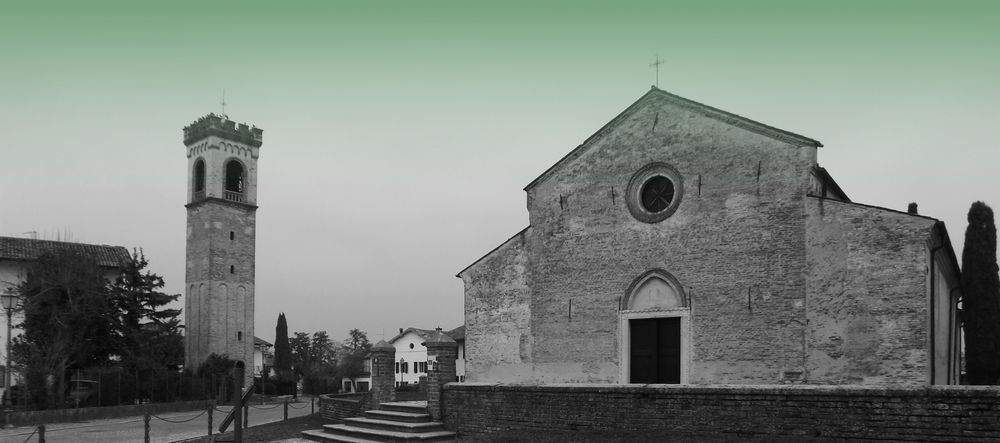
The ancient Duomo di Sant’Andrea - Itinerary 1 arrival
The soul of the community
The ancient Sant'Andrea cathedral, as indicated on the portal, was built after the plague of 1454 and completed in 1477. The Tagliamento River once flowed nearby, symbolically connecting St. Andrew, a fisher of souls, with the setting near the water. Inside are amazing frescoes by Gianfrancesco da Tolmezzo, a well-known artist from the Renaissance in Friuli.
©️ 2024: Pro Casarsa della Delizia APS via Zatti 1, 33072,
Casarsa della Delizia (PN)
Tel. +39 0434 871031
Cell. +39 338 7874972
Email segreteria@procarsa.org
PEC
procasarsa@pec.unplifvg.it
CF 91002390937 - P. IVA 01237500937 - SDI M5UXCR1
www.procasarsa.org








